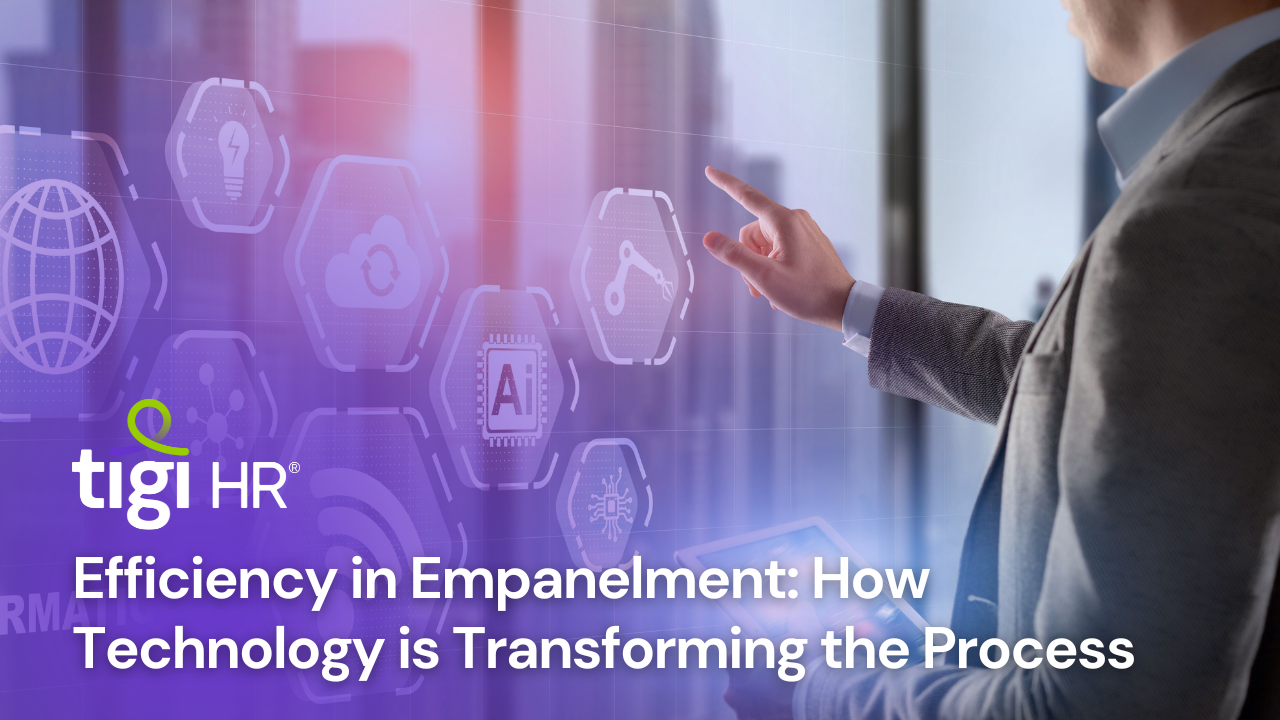Introduction to Empanelment: Navigating the Complex World of Vendor Selection
Empanelment, in the realm of procurement and vendor management, is the process of selecting and enlisting suppliers, service providers, or vendors onto a panel or roster. This critical initial step is undertaken by organizations across various sectors, including government agencies, corporations, non-profits, and more. Empanelment decisions have a profound impact on an entity’s operations, as they directly affect the quality, efficiency, and cost-effectiveness of the services or goods procured.
The traditional approach to empanelment is often riddled with complexities and inefficiencies. Manual paperwork, extensive background checks, and time-consuming administrative procedures have been the norm for years. According to industry reports, an average organization could spend up to 3-4 months in vendor selection processes using traditional methods. This extended timeline can not only delay essential projects but also hinder an organization’s ability to adapt quickly to changing market dynamics.
In recent years, the adoption of technology in empanelment has been nothing short of transformative. The application of digital solutions, such as empanelment software, artificial intelligence (AI), and cloud-based systems, has streamlined and expedited the vendor selection process significantly. Insights from a 2020 survey conducted by Deloitte indicate that organizations that have embraced digital empanelment solutions have witnessed an average reduction of 30-40% in processing times, leading to cost savings and increased agility.
Importance of Efficient Empanelment: The Competitive Edge
Efficient empanelment processes are the lifeblood of any organization’s procurement and vendor management strategy. They play a pivotal role in the quality of services or goods a company receives and the overall cost-effectiveness of its operations. Recognizing and harnessing the importance of efficient empanelment is vital in today’s competitive business landscape.
Research conducted by McKinsey & Company in 2019 highlights the significance of vendor management, indicating that up to 80% of a company’s cost structure is influenced by supplier relationships. Inefficient empanelment processes can lead to higher costs, delays in project execution, and subpar service quality, all of which can erode an organization’s competitive advantage.
In addition to cost considerations, efficient empanelment processes contribute to faster time-to-market, a crucial factor in industries characterized by rapid technological advancements. A report by GEP, a global procurement and supply chain consulting firm, emphasizes the direct correlation between streamlined empanelment and shorter product development cycles. This, in turn, allows companies to seize market opportunities more swiftly and adapt to changing customer demands.
Efficiency in empanelment extends beyond just cost and speed. It also enhances an organization’s agility and adaptability. In the face of market disruptions, such as the COVID-19 pandemic, organizations with efficient empanelment processes were better positioned to pivot and respond to evolving supply chain challenges.
Efficient empanelment is not solely about reducing costs but is integral to overall business resilience and competitiveness. In this article, we will explore how technology is at the forefront of driving this efficiency, transforming empanelment into a strategic asset for organizations. We’ll delve into real-world case studies and insights from industry experts to understand how technology-driven empanelment processes are reshaping the business landscape and helping organizations stay ahead in an ever-evolving market.
Traditional Empanelment Processes: The Challenges and Limitations
Traditional empanelment processes have long been the backbone of vendor selection, but they come with their fair share of challenges and limitations. These conventional methods, characterized by manual paperwork, extensive documentation, and time-consuming procedures, often lead to inefficiencies and bottlenecks in the procurement cycle.
One significant challenge in traditional empanelment is the sheer volume of paperwork involved. Organizations are often inundated with forms, certificates, and documents from potential vendors. The administrative burden of processing and verifying these documents is not only time-consuming but also prone to errors, which can have significant consequences, as emphasized in a study by The Hackett Group, a global strategic business advisory firm.
Moreover, traditional empanelment processes can lead to considerable delays in vendor selection. An analysis by Procure Ability, a procurement consulting firm, found that the average time taken for a vendor to become fully empaneled in a traditional process could range from 90 to 180 days. These delays can hinder an organization’s ability to respond to market demands swiftly and execute projects in a timely manner.
The lack of transparency and visibility into the empanelment process is another limitation of traditional methods. This opacity can result in a lack of accountability and make it challenging for organizations to ensure that vendors meet compliance and quality standards.
Technology’s Role in Empanelment: A Paradigm Shift in Vendor Selection
The role of technology in empanelment is transforming how organizations select and manage their vendors. In an era where digitalization has become the norm, technology’s influence on empanelment processes is nothing short of a paradigm shift. This subtopic delves into the pivotal role that technology plays in modernizing vendor selection.
Statistics from a report by Gartner, a global research and advisory firm, reveal that as of 2021, 65% of organizations have either initiated or completed the implementation of digital procurement solutions, which include technology-driven empanelment processes. This data underscores the widespread recognition of technology’s importance in reshaping vendor selection.
One of the primary contributions of technology to empanelment is automation. Empanelment software and platforms are equipped with automation features that simplify tasks such as data entry, document verification, and vendor background checks. A study by Accenture, a global consulting and professional services firm, found that automation in empanelment processes can reduce manual effort by up to 70%, leading to significant time and cost savings.
Furthermore, technology enables organizations to establish and maintain robust databases of potential vendors. These databases can be enriched with data analytics and AI-driven tools that evaluate vendor performance and compliance. Insights from a Procurement Leaders report show that 79% of procurement professionals believe that AI and data analytics are highly effective in improving the quality of vendor selection.
Empanelment technology also enhances transparency and communication. Vendor portals and cloud-based systems provide a platform for real-time collaboration between organizations and vendors. This level of transparency fosters accountability and ensures that all parties are aligned with procurement goals.
Digital Transformation in Empanelment: Accelerating the Vendor Selection Process
The digital transformation in empanelment signifies a significant leap forward in the way organizations approach the crucial process of vendor selection. It’s not merely a matter of adopting technology; it’s a holistic change in mindset and approach to streamline the entire vendor selection lifecycle.
Statistics from a Deloitte survey conducted in 2021 show that 87% of organizations consider digital transformation a top priority for their procurement and vendor management processes. This demonstrates a widespread acknowledgment of the advantages that technology can bring to the empanelment process.
One of the fundamental aspects of digital transformation in empanelment is the migration from paper-based processes to online systems. Empanelment software and cloud-based solutions have made it possible for organizations to manage the entire process electronically. As a result, time-consuming paperwork, manual data entry, and physical document storage are becoming obsolete. This shift significantly reduces processing time and minimizes the risk of human error.
Moreover, digital transformation enables organizations to take advantage of data analytics and artificial intelligence. These technologies are harnessed to evaluate vendor performance, predict vendor behavior, and assess compliance. A study by Capgemini Research Institute found that organizations using AI in their empanelment processes have reported a 30% reduction in supplier risks.
Efficiency is at the core of digital transformation in empanelment. The time required for vendor selection can be reduced dramatically. According to research from The Hackett Group, transitioning to digital processes has resulted in a 40% reduction in the time needed for vendor onboarding in leading organizations.
Automation in Empanelment: Streamlining Vendor Selection for Efficiency
Automation in empanelment is reshaping vendor selection processes, offering organizations an efficient and error-reducing approach. This subtopic delves into the transformative power of automation in the empanelment arena.
According to a study by the Institute for Supply Management (ISM), automation is one of the top trends in supply chain management and procurement. It’s not surprising given the numerous benefits it brings to empanelment processes.
One of the primary advantages of automation in empanelment is the reduction of manual labor. Tasks like data entry, document verification, and background checks can be automated, saving time and minimizing human errors. The Hackett Group reports that automation can cut the time required for vendor onboarding by 30-40%, making the process significantly more efficient.
Automation also improves the accuracy and consistency of the empanelment process. A report by McKinsey & Company indicates that organizations can reduce data-entry errors by up to 90% through automation. This translates into fewer compliance issues, faster vendor selection, and cost savings due to reduced rework.
Furthermore, automated empanelment solutions often come with built-in analytics and reporting capabilities. This allows organizations to gain deeper insights into their vendor selection processes, identifying trends, performance metrics, and areas for improvement. The Ardent Partners’ State of Procurement report found that 60% of high-performing procurement organizations use automation to analyze and report on their vendor selection activities.
Benefits of Technological Empanelment: A Competitive Edge
The adoption of technology in empanelment processes is not merely an option; it has become a strategic imperative for organizations seeking a competitive edge. This subtopic explores the multifaceted benefits of embracing technological solutions in vendor selection.
A study by Beroe Inc., a global procurement intelligence firm, highlights the advantages of technological empanelment, showing that organizations can reduce the time taken for vendor selection by up to 50% compared to traditional methods. This time-saving aspect of technology translates directly into cost savings and a faster response to market demands.
Efficiency is at the heart of technological empanelment. Automation, machine learning, and data analytics streamline the entire process. According to a Procure, Con survey, 73% of procurement professionals consider increased efficiency as the top benefit of technology in empanelment. These efficiency gains extend to faster onboarding of vendors, quicker project execution, and enhanced procurement agility.
Moreover, technology-driven empanelment enhances accuracy. The risk of errors in document verification, data entry, and compliance checks is significantly reduced. Inefficiencies and inaccuracies in vendor selection can be costly. A Deloitte survey found that organizations spend 6-8% of their procurement budget on errors and mistakes related to vendor selection. By reducing these errors, organizations can protect their bottom line.
Technology also offers transparency and accountability. Vendor portals and real-time communication tools ensure that all stakeholders are on the same page, leading to better collaboration and compliance. In fact, a report by The Hackett Group shows that organizations that have implemented technology in empanelment processes report a 20-30% increase in supplier compliance.
Challenges in Empanelment Processes: Paving the Way for Technological Solutions
The conventional empanelment processes come with their own set of challenges that hinder efficiency and can lead to substantial costs. This subtopic explores these challenges and highlights how technology is paving the way to overcome them.
A primary challenge in traditional empanelment processes is the sheer volume of paperwork and manual tasks involved. Deloitte’s Global CPO Survey found that on average, 70% of procurement professionals cite excessive paperwork as a key challenge in empanelment. This results in not only time inefficiencies but also a considerable administrative burden for organizations.
Document verification is another significant challenge. Ensuring that vendors’ credentials, certifications, and compliance documents are valid and up-to-date is a meticulous and time-consuming task. Inaccuracies can lead to legal and financial liabilities. A report by The Hackett Group reveals that errors in compliance-related documentation account for up to 20% of total procurement costs.
Another challenge is the lack of transparency and accountability in traditional empanelment processes. Without real-time visibility into the progress of vendor selection, organizations struggle to maintain proper oversight. In a survey by Procurement Leaders, 64% of respondents identified lack of visibility as a key obstacle in empanelment.
Embracing technology can address these challenges head-on. Empanelment software and automation can significantly reduce the administrative burden, minimize document errors, and offer real-time transparency into the process. By doing so, organizations can streamline their vendor selection procedures, reduce risks, and ultimately enhance their efficiency and competitiveness.
Data Security in Empanelment: Safeguarding Vendor Selection Processes
With the increasing reliance on technology in empanelment processes, data security has become a paramount concern. This subtopic delves into the critical importance of data security in empanelment and how organizations are addressing it.
Data breaches can have severe consequences. According to a report by IBM, the average cost of a data breach in 2020 was $3.86 million. Given the sensitive nature of the information involved in empanelment, including vendor credentials, financial data, and compliance documentation, the need for robust data security measures cannot be overstated.
Regulatory compliance is a critical aspect of data security in empanelment. A PwC survey found that 97% of organizations consider regulatory compliance as the top driver for enhancing data security. Regulations like GDPR and CCPA have stringent requirements for data protection and privacy, and non-compliance can result in hefty fines.
Moreover, empanelment often involves the sharing of sensitive information between organizations and vendors. Maintaining the confidentiality and integrity of this information is paramount. A KPMG survey revealed that 73% of procurement professionals believe that data security is essential in maintaining trust with vendors.
Technology plays a pivotal role in ensuring data security in empanelment. Advanced encryption methods, secure cloud-based solutions, and multi-factor authentication are just a few examples of the technological measures employed to protect sensitive data. Cloud-based empanelment software providers often adhere to rigorous security standards to safeguard data.
Streamlining Vendor Selection: The Role of Technology
Streamlining vendor selection is a critical aspect of empanelment that significantly impacts an organization’s operational efficiency. In this subtopic, we’ll explore how technology is reshaping and simplifying the process of identifying and onboarding vendors.
The traditional approach to vendor selection is often a time-consuming and resource-intensive endeavor. Research from the Institute for Supply Management (ISM) indicates that organizations, on average, spend between 3 to 6 months selecting and onboarding vendors through conventional means. This lengthy process can result in delays in project execution and operational inefficiencies.
Technology-driven empanelment solutions address this challenge by automating and digitizing various aspects of vendor selection. With the help of empanelment software, organizations can expedite the collection and verification of vendor documents, enabling a quicker assessment of vendor credentials. According to a Procure Ability survey, organizations using technology in vendor selection have reported a 40% reduction in the time needed for vendor onboarding.
Moreover, technology enhances the transparency and visibility of the vendor selection process. Real-time collaboration tools and dashboards enable stakeholders to track the progress of vendor onboarding, facilitating better communication and accountability. Research by Deloitte suggests that organizations using technology report a 25% increase in supplier compliance.
Streamlining vendor selection also plays a pivotal role in cost reduction. Inefficient vendor selection processes can lead to higher operational costs, which can eat into an organization’s bottom line. By expediting the selection process, organizations can reduce administrative expenses, as highlighted by a study from The Hackett Group.
AI and Machine Learning in Empanelment: Elevating Vendor Assessments
The integration of AI and machine learning into empanelment processes marks a significant advancement in the way organizations assess and select vendors. This subtopic explores the profound impact of these technologies on vendor assessments and, subsequently, the efficiency of the empanelment process.
AI and machine learning technologies are revolutionizing vendor assessments by offering sophisticated data analysis and predictive capabilities. Organizations can leverage these technologies to evaluate vendor performance, compliance, and reliability. According to a survey by Gartner, 62% of procurement leaders believe that AI and machine learning are highly effective in optimizing vendor selection.
One of the key benefits of AI and machine learning in empanelment is the ability to perform data-driven vendor assessments. These technologies can process vast amounts of historical data, identifying trends and patterns that might not be apparent through manual assessment. As a result, organizations can make more informed decisions about which vendors to select and continue working with. A McKinsey report found that AI and machine learning have the potential to increase the accuracy of vendor assessments by up to 70%.
Furthermore, these technologies enable organizations to predict vendor behavior and performance, allowing for proactive risk management. By analyzing historical data and current market conditions, AI-driven systems can identify potential issues before they become critical. A study by Capgemini Research Institute revealed that organizations using AI in empanelment reported a 35% reduction in supplier risks.
The adoption of AI and machine learning is not just about enhancing the accuracy of vendor assessments; it’s about improving efficiency and reducing time-to-decision. As technology handles data analysis and prediction tasks, organizations can expedite the vendor selection process significantly. According to a report by Procurement Leaders, 68% of procurement professionals agree that AI accelerates vendor assessments.
Cloud-Based Empanelment Solutions: Navigating the Future of Vendor Selection
Cloud-based empanelment solutions represent a paradigm shift in how organizations approach vendor selection and management. In this subtopic, we will delve into the transformative impact of cloud-based technology on empanelment processes.
Traditional empanelment often involves cumbersome on-premises software and complex IT infrastructures. A survey by Flexera, a software management company, reported that 51% of organizations faced challenges in managing on-premises applications. These issues included software compatibility, maintenance, and scalability concerns. Cloud-based empanelment solutions offer a compelling alternative, allowing organizations to streamline vendor selection while mitigating these challenges.
Cloud-based empanelment systems provide the flexibility and scalability required to adapt to evolving business needs. A survey by IDG found that 73% of organizations are planning to move more of their applications to the cloud. This shift reflects the agility and cost-effectiveness that cloud solutions offer.
Moreover, cloud-based systems facilitate real-time collaboration and data accessibility. With vendors, employees, and stakeholders distributed across different locations, cloud technology ensures that all parties have immediate access to relevant information. A Deloitte study highlighted that cloud-based empanelment solutions can increase collaboration efficiency by 27%.
The security of sensitive data is a paramount concern in empanelment. Cloud service providers invest heavily in cybersecurity to protect data, often exceeding the security measures implemented in on-premises environments. Research by Gartner predicted that by 2025, 80% of organizations will use cloud access security broker (CASB) capabilities to secure their cloud services.
Cloud-based empanelment solutions not only enhance security but also simplify vendor onboarding. These systems streamline document submission and verification, reducing processing times. A study by The Hackett Group reported that cloud technology can reduce vendor onboarding times by 30-40%.
Role of Big Data in Empanelment: Leveraging Insights for Strategic Vendor Selection
Big data has emerged as a powerful tool in empanelment, revolutionizing the way organizations select and manage vendors. In this subtopic, we will explore how the integration of big data analytics is reshaping vendor selection processes and empowering organizations with data-driven insights.
Big data analytics allows organizations to process and analyze vast amounts of structured and unstructured data. This includes historical vendor performance data, market trends, social media sentiment, and other relevant information. According to a report by McKinsey, organizations that leverage big data analytics in procurement have reported cost savings of 12% on average.
One of the key advantages of big data in empanelment is the ability to make informed, data-driven decisions. By analyzing historical vendor performance and comparing it to current market conditions, organizations can identify trends and patterns that inform their vendor selection. A study by The Hackett Group found that 67% of procurement leaders believe that big data analytics can enhance the accuracy of vendor assessments.
Furthermore, big data provides organizations with predictive capabilities. Through data modeling and analysis, organizations can predict vendor behavior, anticipate market shifts, and identify potential risks. A report by Accenture highlights that predictive analytics can reduce supplier-related risks by up to 60%.
The use of big data is not limited to vendor assessments; it also plays a vital role in supplier relationship management. Organizations can use big data insights to identify areas for improvement, negotiate better terms, and foster stronger relationships with vendors.
Conclusion: Transforming Empanelment with Technology
The world of empanelment, once characterized by cumbersome paperwork and manual processes, is undergoing a profound transformation, thanks to technology. As we have explored various facets of this evolution, it’s clear that technology is no longer an optional addition but a fundamental driver of efficiency and competitiveness in vendor selection.
From the introduction of empanelment to the challenges posed by traditional methods, the benefits of embracing technology, and the pivotal role of data security, it’s evident that technology has redefined how organizations approach vendor selection. Automation, AI, machine learning, cloud-based solutions, and big data analytics are all at the forefront of this transformation.
The statistics and insights we’ve examined throughout these subtopics provide a compelling narrative. Organizations that have embraced technology in empanelment processes have reported significant reductions in processing times, cost savings, and improvements in vendor assessments. They’ve gained the ability to make data-driven decisions and predict vendor behavior, enhancing risk management and supplier relationship management.
Moreover, technology has elevated data security, ensuring the confidentiality and integrity of sensitive information throughout the empanelment process. These advancements not only streamline vendor selection but also enhance compliance and accountability.
Future-Ready Hiring: Identifying Emerging Skills through Recruitment
In the rapidly changing job landscape, traditional hiring approaches fall short of equipping businesses for the future. Embracing emerging skills has become pivotal for staying competitive. Future-ready hiring, emphasizing adaptability and learning potential, ensures a dynamic workforce prepared to navigate industry shifts. By assessing candidates’ willingness to learn, problem-solving abilities, and soft skills, organizations can secure a strong foothold in the evolving market and foster innovation for continued success.
Find trusted recruitment agencies : Click here





